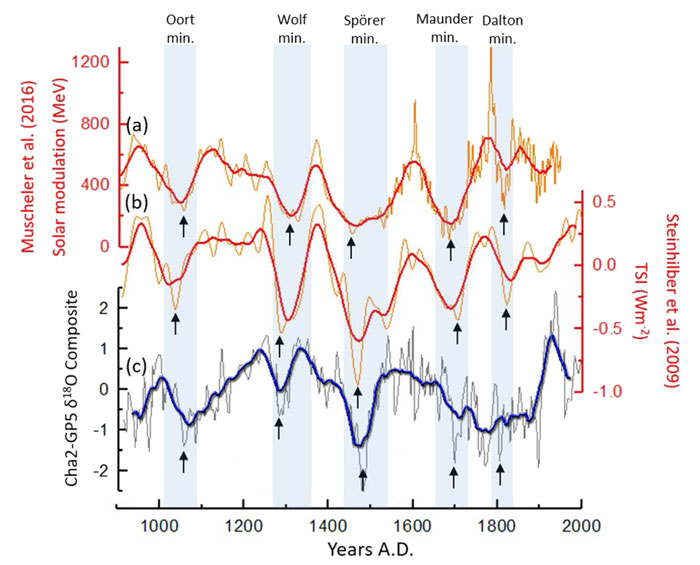| Tweet | Follow @co2science |
Paper Reviewed
Brahim, Y.A., Wassenburg, J.A., Cruz, F.W., Sifeddine, A., Scholz, D., Bouchaou, L., Dassié, E.P., Jochum, K.P., Edwards, R.L. and Cheng, H. 2018. Multi-decadal to centennial hydroclimate variability and linkage to solar forcing in the Western Mediterranean during the last 1000 years. Scientific Reports 8: 17446, DOI:10.1038/s41598-018-35498-x.
Introducing their work, Brahim et al. (2018) note that "information on climate variability in the Western Mediterranean remains scarce due to the lack of long instrumental datasets," adding that "high-resolution paleoclimate reconstructions in this region are thus essential to increase our understanding of hydroclimate variability on various timescales and to discuss potential forcing mechanisms." And so it was their objective to develop a historic record of precipitation/hydrology for this region.
To accomplish their design, the ten researchers created two new high resolution δ18O records from two stalagmites in caves that were only a few 100 m apart in Morocco (Chaara cave and Grotte de Piste, ~33.96°N, 4.25°W), which, when combined, provided a composite proxy for effective rainfall variability over the past millennium.
As shown in Figure 1c, there exists decadal to centennial periodicities in the record, which were confirmed via statistical analyses. With respect to the cause of those periodicities, Brahim et al. report that "comparison with solar forcing reconstructions shows a striking consistency, and the cross-wavelet further shows a clear correlation with the highest power at periodicities similar to the Vries-Suess solar cycle." In particular, as shown in Figure 1 below, the authors say that "low δ18O values, and hence negative phases of the North Atlantic Oscillation that bring precipitation towards the Western Mediterranean, are observed during well-known solar minima periods," which facts are "consistent with previous models which describe low irradiance as a trigger for southward shifts of precipitation-bearing westerlies during winter."
In light of all the above, Brahim et al. conclude by stating their work provides "new proxy evidence for centennial-scale solar forcing" of the climate, which is a far different tune than that sung by climate alarmists, who increasingly claim that almost all climate change since the Industrial Revolution is the product of rising levels of atmospheric CO2.

Figure 1. Comparison of a solar modulation reconstruction (a) and a proxy of total solar irradiance (TSI) (b) with the Northern Morocco composite precipitation reconstruction (Cha2-GP5) (c). Light blue shading indicates periods of low solar activity: Oort minimum (1010-1090 AD), Wolf minimum (1280-1350 AD), Spörer minimum (1450-1550 AD), Maunder minimum (1645-1715 AD) and the Dalton minimum (1790-1820 AD). Black arrows indicate peaks of low solar activity and their corresponding peaks of wet conditions in Morocco. Source: Brahim et al. (2018).




